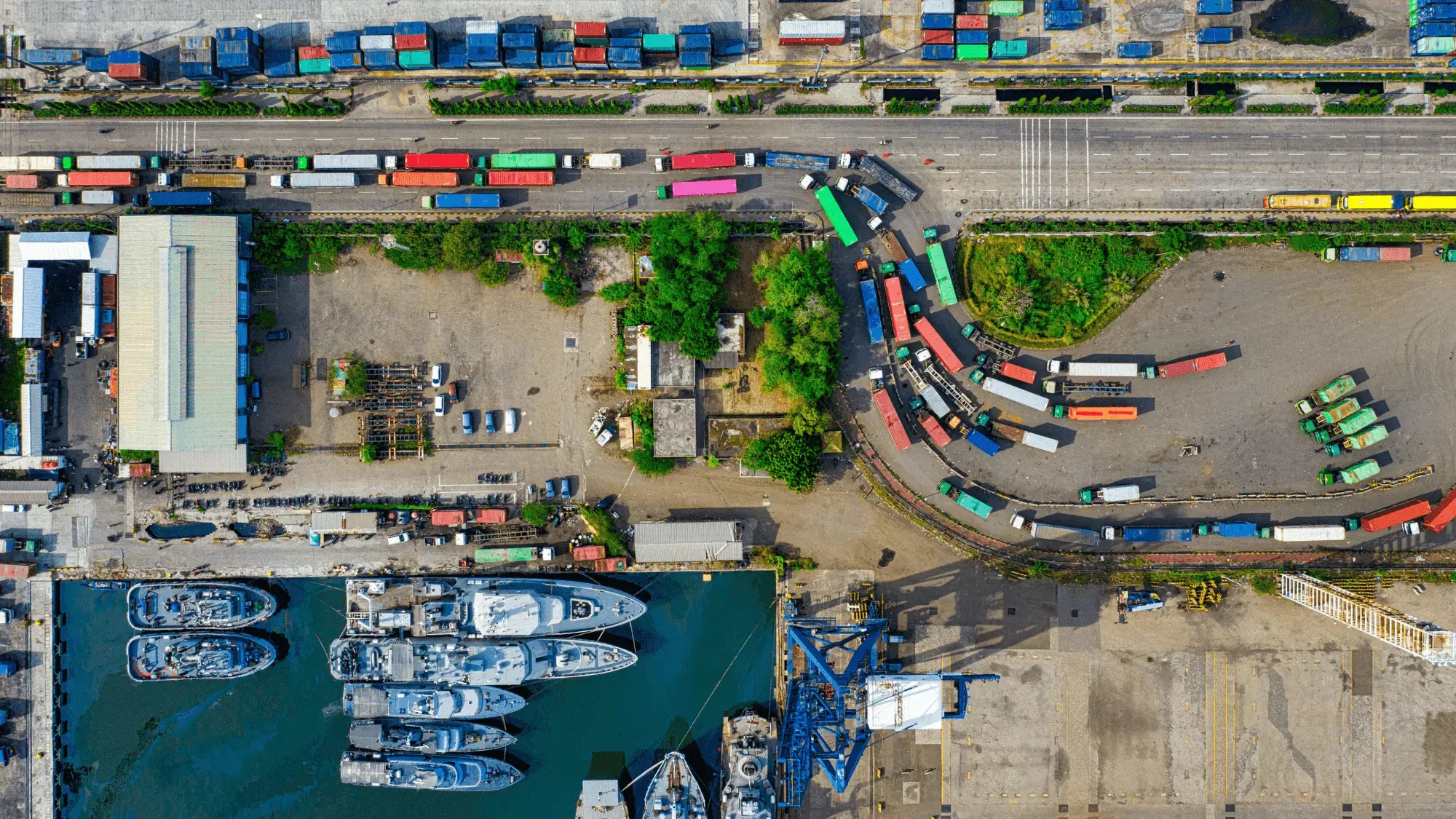
The globalized economy thrives on the seamless movement of goods, but the imposition of tariffs–essentially taxes on imported goods–can create significant ripples in freight management. Tariffs influence everything from the cost of goods and supplier selection to the complexities of navigating international shipping routes.
Understanding these impacts is crucial for effective freight management in the years to come. Let's explore how tariffs are poised to shape the landscape of inbound and outbound freight logistics in 2025 and beyond.
Tariffs and Their Impact on Inbound Freight
Tariffs are taxes imposed on goods imported from other countries. They act as a surcharge added to the price of these goods as they cross borders. Calculated either as a percentage of the value of the goods (ad valorem tariffs) or as a fixed fee per unit (specific tariffs), tariffs directly increase the cost of imported products. This has a cascading effect on inbound freight costs, influencing various aspects of the supply chain.
The most immediate impact is the rise in product prices. Since businesses often pass on the added cost of tariffs to consumers, this can decrease demand and alter consumption patterns. For example, the 2018 tariffs on steel and aluminum led to increased prices for automobiles, washing machines, and even beer, as these industries rely heavily on imported metals.
Beyond pricing, tariffs can trigger significant disruptions to the supply chain. When tariffs make certain goods more expensive, companies may be forced to seek alternative suppliers in different countries. This can lead to delays, logistical challenges, and increased transportation costs. The recent trade tensions between the US and China, for instance, caused many businesses to diversify their sourcing, shifting production to countries like Vietnam and Mexico.
Furthermore, tariffs can influence product availability. If tariffs make importing certain goods prohibitively expensive, businesses may reduce their inventory or discontinue offering those products altogether. This can limit consumer choice and create shortages in the market. The solar industry, for example, faced challenges when tariffs were imposed on imported solar panels, leading to project delays and job losses.
Understanding the multifaceted impact of tariffs on inbound freight is crucial for businesses to adapt and develop strategies to mitigate risks in an ever-changing global trade environment.
Tariffs and Their Impact on Outbound Freight
While tariffs primarily target imports, their influence extends to outbound freight as well, creating a ripple effect that can hinder exporters' competitiveness in the global market. This indirect impact manifests in several ways.
Firstly, tariffs can increase production costs for businesses that rely on imported raw materials or components. When these inputs become more expensive due to tariffs, the overall cost of manufacturing rises, making exported goods less competitive. For example, a US furniture manufacturer that relies on imported wood might face higher production costs due to lumber tariffs, ultimately making their furniture less attractive to international buyers.
Secondly, tariffs can contribute to a stronger US dollar. When tariffs are imposed on foreign goods, demand for those goods may decrease, leading to a decrease in demand for the foreign currency needed to purchase them. This can cause the US dollar to strengthen relative to other currencies, making US exports more expensive for buyers in other countries. This can be particularly challenging for industries like agriculture, where US exporters compete directly with producers in other countries.
Thirdly, tariffs can invite retaliatory tariffs from other countries. When one country imposes tariffs on another, the targeted country often responds with its own tariffs on goods from the initiating country. This can create a tit-for-tat trade war, with escalating tariffs harming businesses on both sides. The US-China trade war, for example, saw both countries imposing tariffs on billions of dollars worth of each other's goods, impacting industries ranging from agriculture to technology.
These factors combined can significantly impact exporters' ability to compete in global markets. Increased production costs, a stronger US dollar, and retaliatory tariffs all contribute to making US exports more expensive and less attractive to international buyers. This can lead to decreased sales, reduced profits, and even job losses in export-oriented industries.
Understanding these indirect impacts of tariffs is essential for businesses engaged in international trade to develop strategies that mitigate risks and maintain competitiveness in the global marketplace.
Freight Management Strategies for Dealing with Tariffs
Navigating the complexities of international trade in a tariff-laden environment requires proactive and strategic freight management. By implementing effective strategies, businesses can mitigate the impact of tariffs and maintain a competitive edge.
Diversify Your Supplier Base
Diversifying your supplier base is a crucial first step. Relying solely on suppliers in countries heavily impacted by tariffs can expose your business to significant risk. By sourcing materials or finished goods from multiple countries with varying tariff structures, you can create a more resilient supply chain. This may involve exploring new markets, establishing relationships with suppliers in different regions, and carefully evaluating the cost-benefit analysis of each sourcing option.
Identify Alternative Shipping Routes
Identifying alternative shipping routes can also help mitigate tariff-related costs. While direct routes may seem like the most efficient option, they might involve passing through countries with high tariffs. Exploring alternative routes, even if they are slightly longer, could result in lower overall costs by avoiding high-tariff zones. This requires careful planning, collaboration with logistics providers, and a thorough understanding of international trade routes and regulations.
Negotiate with Suppliers
Negotiating with suppliers is another valuable strategy. In some cases, suppliers may be willing to absorb some of the tariff-related costs or offer alternative pricing structures to maintain your business. Building strong relationships with suppliers, communicating openly about the impact of tariffs, and exploring mutually beneficial solutions can be key to navigating these challenges.
Raise Prices (With Caution)
Passing on costs to customers is a strategy that should be considered carefully. While raising prices might seem like a straightforward solution, it can impact demand and potentially reduce sales. If this approach is necessary, it's important to communicate transparently with customers, explaining the reasons behind the price increase and emphasizing the value your products or services provide.
Partner with a 3PL for Support
Implementing these strategies requires a proactive approach, a deep understanding of global trade dynamics, and a willingness to adapt to changing circumstances. For many businesses, partnering with a third-party logistics provider (3PL) can be an invaluable asset in navigating these complexities.
3PLs offer expertise in international trade, customs regulations, and supply chain optimization. They can assist with diversifying supplier networks, identifying cost-effective shipping routes, and negotiating favorable rates with carriers. By leveraging the knowledge and resources of a 3PL, businesses can streamline their freight management processes, reduce costs, and enhance their ability to adapt to the ever-changing landscape of global trade.
The Outlook for Tariffs in 2025
The global trade landscape is in constant flux, with shifting geopolitical priorities and economic pressures influencing tariff policies. Currently, the US maintains a complex web of trade agreements and tariff structures with various countries. While some agreements promote free trade, others, like those with China, remain subject to ongoing negotiations and potential tariff adjustments.
Predicting the future of tariffs is challenging, but several factors point to the possibility of both increases and decreases. On one hand, protectionist sentiments and concerns about domestic industries could lead to increased tariffs on certain goods. On the other hand, efforts to strengthen international cooperation and promote global economic growth could result in tariff reductions.
Any changes in tariff policy will undoubtedly impact freight management. Increases in tariffs could lead to higher costs, supply chain disruptions, and the need to re-evaluate sourcing strategies. Conversely, tariff reductions could create new opportunities for businesses, opening up markets and reducing the cost of imported goods. Staying informed about trade policy developments and remaining adaptable will be crucial for businesses to navigate these shifts effectively.
Navigating the Future of Freight in a Tariff-Driven World
When it comes to global trade, tariffs play a pivotal role, influencing costs, supply chains, and, ultimately, a business's bottom line. Whether navigating the complexities of inbound or outbound freight, understanding the impact of tariffs is essential for effective freight management. By diversifying suppliers, exploring alternative shipping routes, and staying informed about trade policies, businesses can mitigate risks and maintain competitiveness.
As tariff landscapes continue to evolve, agility and informed decision-making are paramount. Partnering with a 3PL like Customodal can equip your business with the expertise and resources needed to navigate these complexities. Our deep understanding of international trade, customs regulations, and supply chain optimization can help you proactively address tariff challenges, streamline your freight operations, and ensure the seamless flow of goods across borders.
Don't let tariffs derail your business goals. Contact Customodal today to explore how our customized solutions can optimize your freight management strategy and drive success in the global marketplace.





